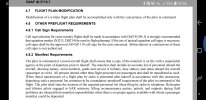When I was at HSC-28 we'd take off VFR as BAY RAIDER XX but in the off chance we filed IFR it would be BRAVO ROMEO XX...BR was our tail code...coincidence only. HSC-22 is CRUSADER with an AM tail code.
It's how the callsign/FAA/Navy relationship works. BAY RAIDER was your JANAP. BR (and I get the amusing coincidence that the tail code matches that) is what you "should" (shall) file with outside of your local area. The fact that you're saying you use your JANAP IFR is interesting. A fact close to my heart when we used to be able to use ("legally") our JANAP beyond the local area.
In the fighter community we share tail codes and take off VFR with our tail code + side number.
For the record, the reason you "share your tailcode" is because you're in the same airwing. That's the whole point of your tailcode. It identifies who you're attached to. Atlantic airwings: Ax. Pacific airwings: Nx. The whole "Echo" thing was TW-5. And so on.

